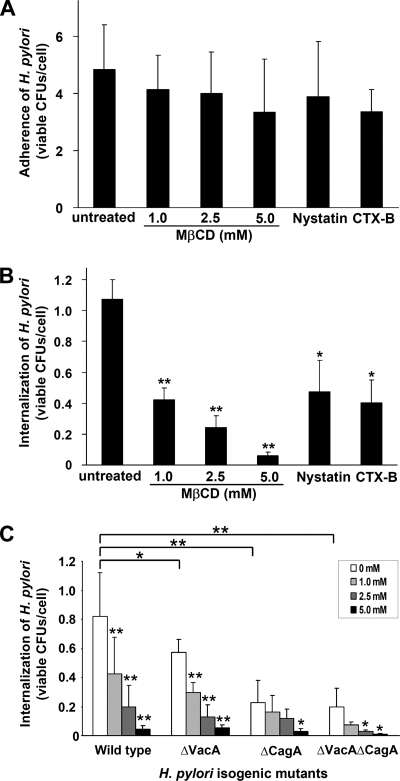FIG. 7.
H. pylori internalization rather than adherence to AGS cells is influenced by raft-disrupting agents. (A) Adherence of H. pylori to AGS cells was not blocked by pretreatment with MβCD, nystatin (50 μg/ml), or CTX-B (20 μg/ml). (B) Internalization of H. pylori in AGS cells was influenced by pretreatment with MβCD, nystatin (50 μg/ml), or CTX-B (20 μg/ml). (C) Surface virulence factors CagA and VacA were involved in the in vitro internalization assay. AGS cells were not treated or pretreated with MβCD (1.0, 2.5, and 5.0 mM) and then infected with wild-type H. pylori and isogenic mutants (ΔVacA, ΔCagA, and ΔVacAΔCagA). The viable bacterial uptake shown in panels B and C was determined by an in vitro gentamicin assay. The results are expressed as the number of viable CFU per cell, and the values are the means and standard deviations of at least six independent experiments. Statistical significance was calculated using Student's t test and compared to the untreated cells in panels A and B. In panel C, statistical significance was calculated for each isogenic mutant by comparison to wild-type H. pylori. A statistical evaluation of the internalization activity for infected cells before and after MβCD treatment was performed for the wild-type, ΔVacA, ΔCagA, and ΔVacAΔCagA strains. One asterisk, P < 0.05; two asterisks, P < 0.01.

